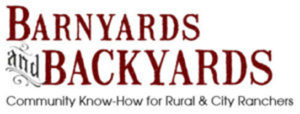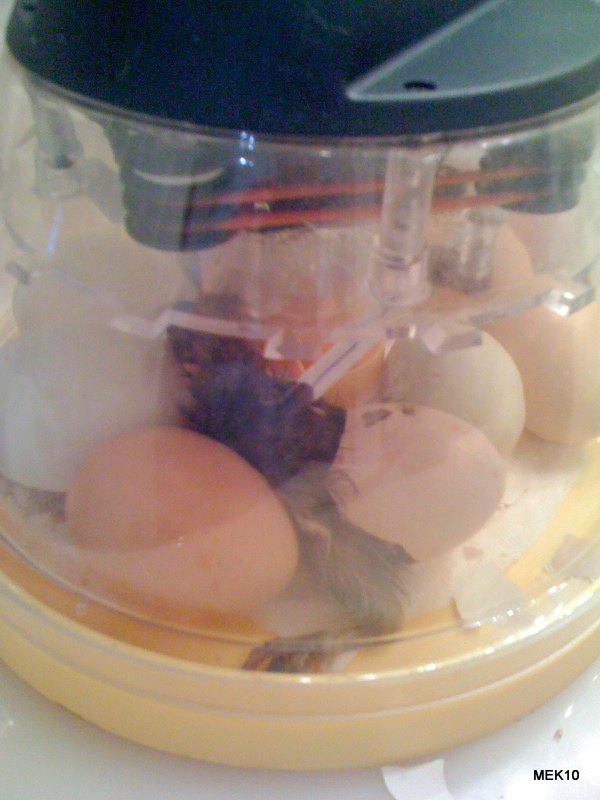A July 6, 2010 article in the Salt Lake Tribune brought up the problem of arsenic in the feed of backyard chickens. In Utah, a family is suffering horrible consequences of our society’s willingness to irresponsibly drug food-producing animals. Roxarsone, an arsenical, is commonly added to chicken feed. For a family in Utah with a backyard flock, the arsenic went into the chickens – then into the eggs – then into the family’s kids.
Although I knew large scale poultry productions NEEDLESSLY use arsenic in feeds to “prevent bacterial infections and improve weight gain” I was surprised to find it available to the general public in NON-Organic chicken feed. However, research has proven that Roxarsone is not used in layer feed, only broiler feed. Not sure how it got into the family’s laying chicken feed but they could have given the wrong feed, or the manufacturer scewed up. In either case… it’s still very wrong to even use Roxarsone in any animal feed.
Here’s the Salt Lake Tribune article:
Christina McNaughton wasn’t sure where to begin looking when worrisome levels of arsenic turned up in two Utah County children last summer. The family’s water wasn’t contaminated. Not the soil either.
The trail eventually led McNaughton, a toxicologist for the Utah Department of Health, to the family’s backyard chicken coop – along with the eggs that came out of it, the feed that went into the hens that laid them and, finally, widely used animal-feed additives containing arsenic.
“For everyone who has backyard chickens,” said McNaughton, “this is an issue.”
But the Utah study goes far beyond a Mapleton chicken coop. The use of roxarsone and other arsenic-based additives in poultry and swine feed is at the center of a national controversy.
“Because we’ve turned a blind eye to what we put in our animal feed, we’re putting our children at risk,” said David Wallinga, director of the Minneapolis-based Institute for Agriculture and Trade Policy, an organization that is petitioning the U.S. Food and Drug Administration to ban the arsenic additives.
While the children hadn’t shown symptoms of arsenic poisoning, the daughter had double the arsenic deemed toxic, her son was 75 percent above the limit, and no one, including the poison-control center, could figure out why.
The mother had the water and soil tested, but those levels were about one-fifth the arsenic levels allowed by the U.S. Environmental Protection Agency. So, she and McNaughton studied a list of foods the children eat. They zeroed in on eggs.
“Her kids liked eggs a lot,” said McNaughton, noting they each consumed about a dozen a week from the family’s backyard chickens.
Arsenic-based additives
A little research of the scientific literature suggested the link between the arsenic, the eggs and the feed. The American Chemical Society had noted that about 70 percent of U.S. broilers were fed roxarsone, the most widely used arsenic-based additive, according to McNaughton’s study.
And, although the poultry industry and regulators insist that virtually all of the additive is excreted, studies by Wallinga’s center in 2004 showed that all of the fast-food chicken the think tank tested contained elevated levels of arsenic and more than half of the store-bought chicken tested had notable levels of arsenic. In contrast, organic and boutique brands contained little or no arsenic, the group’s analysis found.
The FDA approved the use of roxarsone and its cousins in the mid-1940s, and Wallinga’s group estimates the agriculture industry uses up to 2.2 million pounds a year in the production of about 43 billion pounds of poultry meat. It’s combined with antibiotics to help chickens fend off diseases and grow bigger and tastier.
Meanwhile, in the environmental health arena, concern about arsenic has been growing. In its “organic” form, it’s relatively benign. But, when transformed into its inorganic form in the guts of animals and people, for instance, it becomes more hazardous.
High arsenic levels have been associated with cancer of the skin, bladder, kidney, liver and lungs, as well as immune system, endocrine and neurological problems.
The EPA has responded to the growing body of science on the hazards of arsenic by banning it as a wood preservative and in pesticides. Regulators also slashed the levels of arsenic allowed in drinking water to concentrations of no more than 10 parts per million.
At the same time, EPA has made toxic cleanups of arsenic-contaminated sites a priority. In Utah, they include Superfund cleanups at International Smelting and Refining in Tooele, Eureka Mills in Juab County, Kennecott’s North Zone site in Magna, Midvale Slag and the Flagstaff and Davenport smelters at the mouth of Little Cottonwood Canyon in Sandy.
The Agency for Toxic Substances and Disease Registry (ATSDR), the EPA’s toxics laboratory, gave the Health Department a grant to test eggs from the Mapleton family’s hens, as well as the feed they were eating. The state turned up arsenic concentrations of 1.9 parts per million in the feed and 0.055 ppm in the eggs. Although the FDA allows almost 10 times more arsenic in eggs than the Health Department measured, the children who ate the tainted eggs developed levels considered toxic by the ATSDR.
And once the children stopped eating the family’s eggs, and once the chickens were given arsenic-free feed to eat, contamination levels declined, follow-up tests showed.
“We tested regular grocery store eggs,” McNaughton added, “and they did not have any arsenic.”
Source: http://www.sltrib.com/sltrib/home/49868991-75/arsenic-eggs-feed-levels.html.csp?page=1












[…] Arsenic in Chicken Feed Although I knew large scale poultry productions NEEDLESSLY use arsenic in feeds to "prevent bacterial infections and improve weight gain" I was surprised to find it available to the general public in NON-Organic chicken feed. … Arsenic in Chicken Feed […]